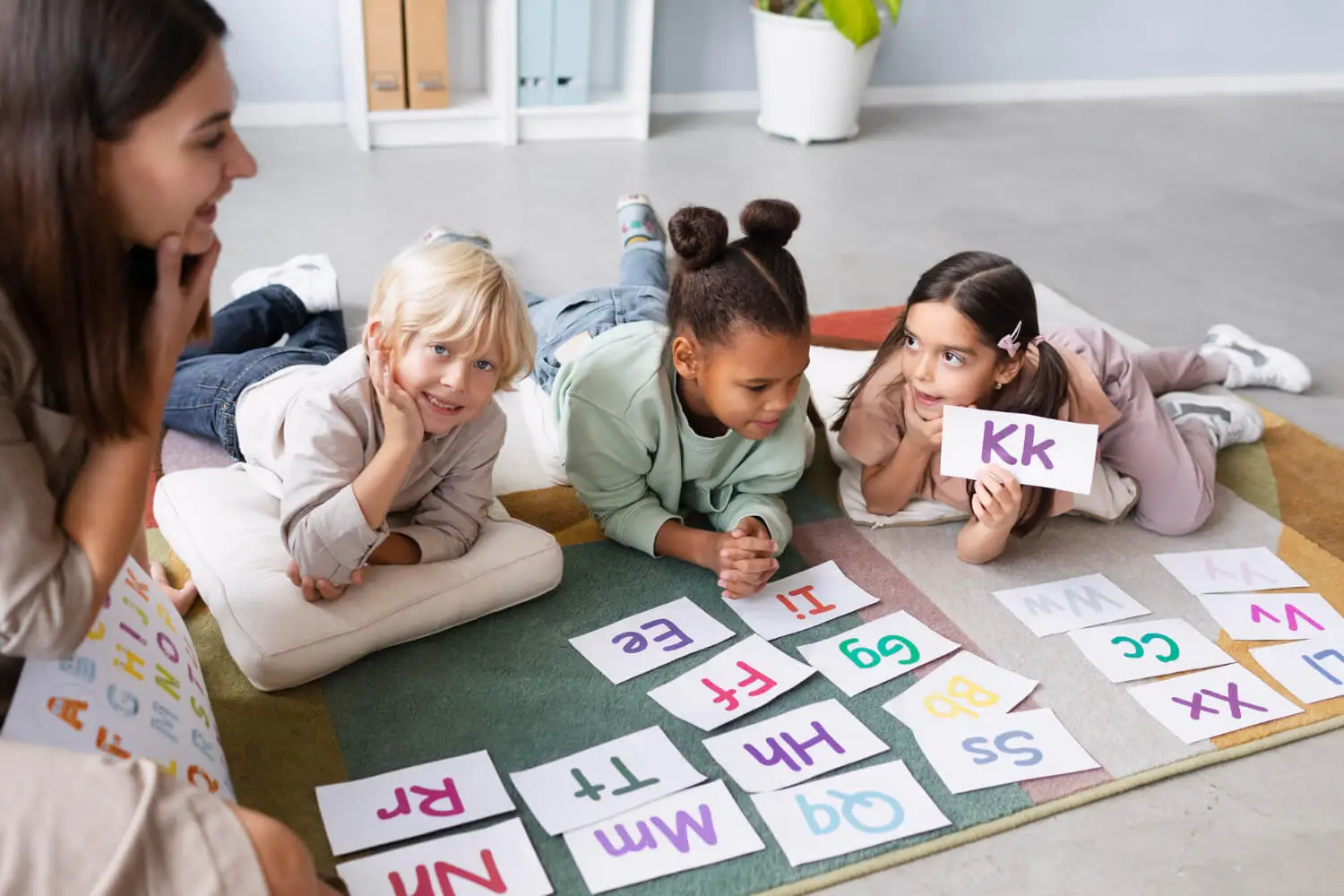Preschool Homeschool Curriculum
When I first decided to homeschool my preschooler, I was equal parts excited and overwhelmed. I wanted to create a learning environment that was both fun and effective, but I had no idea where to start. How could I ensure my child was developing the right skills while keeping them engaged? That’s when I realized the importance of choosing the right preschool homeschool curriculum.
The early years are a critical time for cognitive, social, and emotional development. A well-structured curriculum can make all the difference in laying a strong foundation for lifelong learning. But with so many options available, how do you know which one is best for your child?
In this article, I’ll walk you through the top 10 preschool homeschool curriculum options that I’ve researched and personally explored. Whether you’re a seasoned homeschooling parent or just starting, this guide will help you find the perfect fit for your little learner
Table of Contents
Why Choose a Preschool Homeschool Curriculum?
Personalized Learning at Your Child’s Pace
One of the greatest benefits I’ve found in homeschooling is the ability to tailor lessons to my child’s unique needs. Unlike traditional classrooms, where one size fits all, a preschool homeschool curriculum allows me to adjust the pace and approach based on my child’s strengths and areas for growth. For example, when my little one showed a keen interest in letters, I could focus on early literacy while giving math a lighter touch.
Strengthening Family Bonds Through Education
Homeschooling has given me the chance to create memories with my child that I wouldn’t trade for anything. Whether it’s reading stories together, exploring nature during science lessons, or simply laughing through a messy art project, these moments have brought us closer as a family. Teaching my preschooler has shown me just how rewarding and impactful being involved in their education can be.
Cost-Effective and Convenient Learning
Another thing I’ve noticed is how cost-effective homeschooling can be compared to traditional preschools. Many preschool homeschool curriculum options are affordable and come with reusable materials. Plus, learning at home eliminates the need for daily commutes, which saves time and money while providing a flexible schedule that works for our family.
What to Look for in a Preschool Homeschool Curriculum

Before diving into the list, it’s important to understand what makes a great preschool homeschool curriculum. Here are the key factors I considered when evaluating each option:
Age-Appropriate Content
Preschoolers have unique learning needs. The curriculum should align with their developmental stage, focusing on foundational skills like letter recognition, counting, and social interaction. Studies show that early childhood education plays a crucial role in shaping future academic success, so choosing age-appropriate content is non-negotiable.
Flexibility and Adaptability
Every child learns at their own pace. A good curriculum should allow you to customize lessons based on your child’s interests and progress. Flexibility is especially important for parents juggling multiple responsibilities.
Hands-On Learning Opportunities
Young children learn best through play and exploration. Look for programs that incorporate hands-on activities, such as crafts, experiments, and outdoor play. Research consistently highlights the benefits of play-based learning in early childhood development.
Parental Involvement
As a homeschooling parent, you’ll play a central role in your child’s education. Choose a curriculum that provides clear instructions and resources to guide you through the process.
Criteria for Selecting the Best Preschool Homeschool Curriculum
Focus on Foundational Skills
A good preschool homeschool curriculum should cover the basics, such as literacy, numeracy, and social-emotional skills. These foundational areas set the stage for lifelong learning. For instance, programs that include phonics games and number recognition activities have been a hit in my home.
Age-Appropriate and Engaging Content
Preschoolers learn best when lessons feel like play. That’s why I look for curriculums with colorful visuals, hands-on activities, and interactive elements. From puzzles to songs, engaging content keeps my child’s interest alive and makes learning something they look forward to every day.
Support for Parents
As a parent without a formal teaching background, I’ve appreciated curriculums that provide clear lesson plans and guidance. Some programs even include video tutorials or online communities, which have been invaluable in boosting my confidence and giving me new ideas to keep learning exciting.
Top 10 Preschool Homeschool Curriculum Options

1. ABCmouse
ABCmouse has been a lifesaver for me when I needed an interactive, digital solution. This curriculum offers a wide range of activities, from phonics lessons to math games, all in a user-friendly app. I’ve seen my child’s confidence grow as they earn rewards and complete lessons at their own pace.
2. The Good and the Beautiful Preschool
If you value wholesome, faith-based learning, The Good and the Beautiful is a fantastic option. It’s beautifully designed, with engaging stories and hands-on activities. I’ve used it to teach my preschooler basic phonics and counting while fostering a love for nature and art.
3. Horizons Preschool Curriculum
Horizons stands out for its comprehensive approach. With detailed lesson plans covering phonics, math, and Bible studies, it’s perfect for parents who want a structured program. I’ve found the colorful workbooks and engaging activities to be incredibly effective in keeping my child-focused.
4. Mother Goose Time
Mother Goose Time has been a favorite in our home for its monthly thematic units. Each theme—like “Under the Sea” or “Space Adventure”—comes with storytelling, crafts, and music that bring learning to life. It’s an excellent choice for creative families.
5. Oak Meadow Preschool Curriculum
For parents who love nature-inspired learning, Oak Meadow is a gem. Its Montessori-aligned approach emphasizes exploration and creativity. I’ve enjoyed watching my child thrive through hands-on activities like gardening and nature walks.
6. Time4Learning Preschool Program
Time4Learning offers a self-paced, online curriculum with engaging animations and interactive lessons. It’s been a great way to introduce my child to technology while reinforcing foundational skills in a fun and accessible way.
7. BJU Press Footsteps for Fours
This faith-based curriculum focuses on phonics, early math, and Bible stories. What I love most is the structured yet flexible lesson plans, which have made teaching so much easier for me. The engaging materials keep my preschooler’s attention throughout the day.
8. Five in a Row
Five in a Row is a literature-based curriculum that uses classic children’s books as the foundation for lessons. I’ve found it incredibly rewarding to see how stories like “The Runaway Bunny” spark my child’s imagination while teaching critical thinking and creativity.
9. Before Five in a Row
Designed for younger preschoolers, Before Five in a Row introduces pre-reading and social skills through storytelling and play. It’s a gentle, engaging way to lay the groundwork for more structured learning.
10. Sonlight Preschool Curriculum
Sonlight’s literature-rich approach has been a joy to use. With its focus on global stories and hands-on projects, it’s helped my child develop a broader understanding of the world. The included materials make lesson planning a breeze.
Tips for Implementing a Preschool Homeschool Curriculum

Create a Daily Routine
When I first started homeschooling, establishing a daily routine was key. Preschoolers thrive on consistency, so I’ve found that setting aside specific times for lessons, play, and quiet activities helps keep everything on track.
Incorporate Play-Based Learning
Learning doesn’t have to feel like work. I’ve seen amazing results by incorporating play-based activities like sensory bins, building blocks, and scavenger hunts. These methods make lessons enjoyable and memorable for my child.
Regularly Assess Progress
Tracking progress has helped me ensure my child is meeting milestones without feeling pressured. Simple methods like journaling achievements or using progress charts have been effective tools for monitoring growth and adjusting the curriculum as needed.
FAQ: Preschool Homeschool Curriculum
What is the best preschool homeschool curriculum?
The best preschool homeschool curriculum depends on your child’s learning style and your family’s preferences. For example, ABCmouse works well for tech-savvy families, while Oak Meadow is ideal for nature-inspired learners.
Can I homeschool my preschooler with no teaching experience?
Absolutely! Most curriculums are designed with user-friendly guides and resources, making them accessible for parents without a teaching background.
How much time should I spend on preschool homeschooling each day?
I recommend spending 1-2 hours daily on lessons. Preschoolers have short attention spans, so shorter, engaging sessions work best.
Are there free preschool homeschool curriculums available?
Yes! Many online platforms offer free resources, such as printable worksheets and activity guides, to supplement your curriculum.
What materials do I need to start homeschooling my preschooler?
You’ll need basics like books, craft supplies, and any specific materials outlined in your chosen curriculum. A dedicated learning space also helps create a focused environment.
Conclusion
Choosing the right preschool homeschool curriculum can feel like a big decision, but it’s also an opportunity to create a personalized and meaningful educational experience for your child. Whether you prefer structured programs like Horizons or creative approaches like Mother Goose Time, there’s a curriculum that will meet your family’s needs. Take the time to explore your options, trust your instincts, and enjoy the journey of teaching your early learner. Ready to take the first step? Let’s make learning at home an adventure they’ll never forget!

